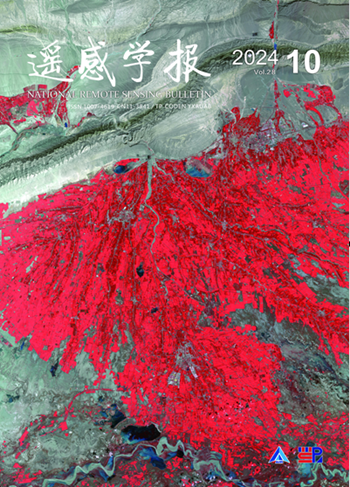Finer-Resolution Mapping of Global Land Cover: Recent Developments, Consistency Analysis, and Prospects
引用次数: 82
Abstract
Land-cover mapping is one of the foundations of Earth science. As a result of the combined efforts of many scientists, numerous global land-cover (GLC) products with a resolution of 30 m have so far been generated. However, the increasing number of fine-resolution GLC datasets is imposing additional workloads as it is necessary to confirm the quality of these datasets and check their suitability for user applications. To provide guidelines for users, in this study, the recent developments in currently available 30 m GLC products (including three GLC products and thematic products for four different land-cover types, i.e., impervious surface, forest, cropland, and inland water) were first reviewed. Despite the great efforts toward improving mapping accuracy that there have been in recent decades, the current 30 m GLC products still suffer from having relatively low accuracies of between 46.0% and 88.9% for GlobeLand30-2010, 57.71% and 80.36% for FROM_GLC-2015, and 65.59% and 84.33% for GLC_FCS30-2015. The reported accuracies for the global 30 m thematic maps vary from 67.86% to 95.1% for the eight impervious surface products that were reviewed, 56.72% to 97.36% for the seven forest products, 32.73% to 98.3% for the six cropland products, and 15.67% to 99.7% for the six inland water products. The consistency between the current GLC products was then examined. The GLC maps showed a good overall agreement in terms of spatial patterns but a limited agreement for some vegetation classes (such as shrub, tree, and grassland) in specific areas such as transition zones. Finally, the prospects for fine-resolution GLC mapping were also considered. With the rapid development of cloud computing platforms and big data, the Google Earth Engine (GEE) greatly facilitates the production of global fine-resolution land-cover maps by integrating multisource remote sensing datasets with advanced image processing and classification algorithms and powerful computing capability. The synergy between the spectral, spatial, and temporal features derived from multisource satellite datasets and stored in cloud computing platforms will definitely improve the classification accuracy and spatiotemporal resolution of fine-resolution GLC products. In general, up to now, most land-cover maps have not been able to achieve the maximum (per class or overall) error of 5%–15% required by many applications. Therefore, more efforts are needed toward improving the accuracy of these GLC products, especially for classes for which the accuracy has so far been low (such as shrub, wetland, tundra, and grassland) and in terms of the overall quality of the maps.全球土地覆盖精细分辨率制图:近期发展、一致性分析与展望
土地覆盖测绘是地球科学的基础之一。在许多科学家的共同努力下,迄今为止已经产生了许多分辨率为30米的全球土地覆盖(GLC)产品。然而,越来越多的高分辨率GLC数据集带来了额外的工作量,因为有必要确认这些数据集的质量并检查它们对用户应用程序的适用性。为了给用户提供指导,本研究首先回顾了目前可用的30万种GLC产品的最新发展(包括三种GLC产品和四种不同土地覆盖类型的专题产品,即不透水地表、森林、农田和内陆水域)。尽管近几十年来在提高制图精度方面做出了巨大的努力,但目前的30 m GLC产品仍然存在相对较低的精度,GlobeLand30-2010的精度为46.0% ~ 88.9%,FROM_GLC-2015的精度为57.71% ~ 80.36%,GLC_FCS30-2015的精度为65.59% ~ 84.33%。8种不透水地表产品的全球30 m专题地图报告精度为67.86% ~ 95.1%,7种林产品的精度为56.72% ~ 97.36%,6种农田产品的精度为32.73% ~ 98.3%,6种内陆水产品的精度为15.67% ~ 99.7%。然后检查当前GLC产品之间的一致性。GLC地图在空间格局方面显示出良好的总体一致性,但在某些特定区域(如过渡带),某些植被类别(如灌木、乔木和草地)的一致性有限。最后,展望了精细分辨率GLC制图的发展前景。随着云计算平台和大数据的快速发展,谷歌Earth Engine (GEE)通过整合多源遥感数据集,结合先进的图像处理分类算法和强大的计算能力,极大地促进了全球精细分辨率土地覆盖地图的制作。多源卫星数据集的光谱、空间和时间特征与存储在云计算平台之间的协同作用,必将提高精细分辨率GLC产品的分类精度和时空分辨率。总的来说,到目前为止,大多数土地覆盖图都无法达到许多应用程序所要求的5%-15%的最大(每类或整体)误差。因此,在提高这些GLC产品的精度方面,特别是在目前精度较低的类别(如灌木、湿地、苔原和草地)和地图的整体质量方面,还需要付出更多的努力。
本文章由计算机程序翻译,如有差异,请以英文原文为准。
求助全文
约1分钟内获得全文
求助全文
来源期刊

遥感学报
Social Sciences-Geography, Planning and Development
CiteScore
3.60
自引率
0.00%
发文量
3200
期刊介绍:
The predecessor of Journal of Remote Sensing is Remote Sensing of Environment, which was founded in 1986. It was born in the beginning of China's remote sensing career and is the first remote sensing journal that has grown up with the development of China's remote sensing career. Since its inception, the Journal of Remote Sensing has published a large number of the latest scientific research results in China and the results of nationally-supported research projects in the light of the priorities and needs of China's remote sensing endeavours at different times, playing a great role in the development of remote sensing science and technology and the cultivation of talents in China, and becoming the most influential academic journal in the field of remote sensing and geographic information science in China.
As the only national comprehensive academic journal in the field of remote sensing in China, Journal of Remote Sensing is dedicated to reporting the research reports, stage-by-stage research briefs and high-level reviews in the field of remote sensing and its related disciplines with international and domestic advanced level. It focuses on new concepts, results and progress in this field. It covers the basic theories of remote sensing, the development of remote sensing technology and the application of remote sensing in the fields of agriculture, forestry, hydrology, geology, mining, oceanography, mapping and other resource and environmental fields as well as in disaster monitoring, research on geographic information systems (GIS), and the integration of remote sensing with GIS and the Global Navigation Satellite System (GNSS) and its applications.
 求助内容:
求助内容: 应助结果提醒方式:
应助结果提醒方式:


